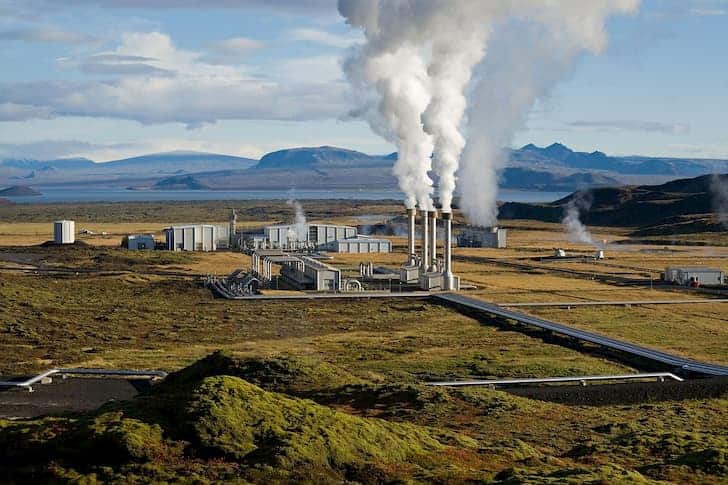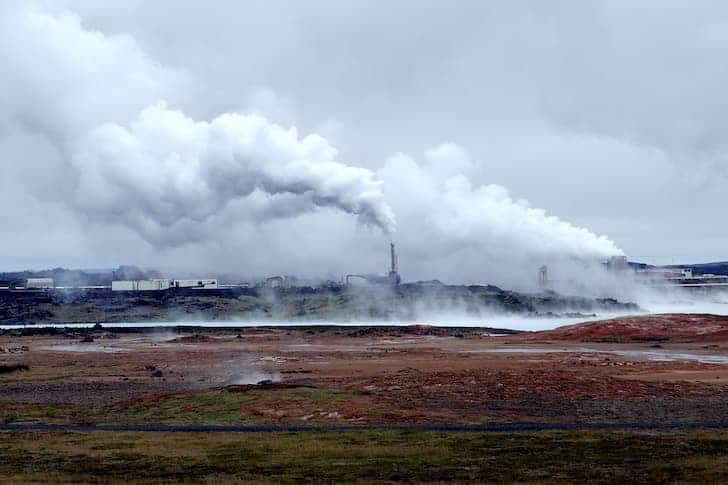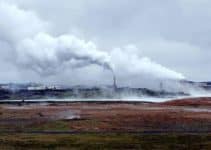The temperature at earth’s core exists at roughly 7200 degrees Fahrenheit. This is due to the decay of radioactive materials millions of years ago. The high temperature beneath the earth’s surface can produce an enormous amount of energy that could produce several gigawatts of electricity. Technically speaking, geothermal energy is a renewable source of energy that can produce energy as long as the Earth exists.
Geothermal energy is clean, sustainable, environment friendly, cost-effective, and reliable. Geothermal energy resources range from the shallow ground to hot water and hot rock found a few miles beneath the Earth’s surface. It can also be found deeper into the Earth’s interior due to the extremely high temperatures and pressures of molten rock called magma. In the United States, most geothermal reservoirs of hot water are located in the western states, Alaska, and Hawaii.
Geothermal energy is a type of energy that can really make it easy for companies to get what they need without using a lot of fossil fuels in the process. In this article, we’re going to take a closer look at some of the most important pros and cons that are related to using geothermal energy for your home or for your business when it comes to energy.
The sooner we get started with alternative energy sources and recognize that fossil fuels makes us less secure as a nation, and more dangerous as a planet, the better off we’ll be. ~ ~ Lindsey Graham
Various Pros of Geothermal Energy
1. Geothermal Energy is a Renewable source of Energy
Geothermal energy is extracted from the earth’s core and will be available as long as the earth exists. It is therefore renewable and can be used for roughly another 4-5 billion years. While fossil fuels have an expiry date, renewable sources like geothermal energy is not going to expire anytime soon.
2. It is Environment Friendly
Geothermal energy is green in all aspects of its production and use! It is actually known for having the least impact of any power source. When it comes to the process of developing and making it, geothermal power is practically completely emission-free.
There is absolutely zero carbon used when it comes to the production of this type of power. Also, the whole procedure can clean out sulfur that may have generally been discharged from other processes.
3. No Fuel Needed
No fuel is used at all during the production and use of energy. Why? Because there is absolutely no mining or transportation-related to the process, which means that there aren’t trucks emitting fumes and gas, which means that the atmosphere is not being as affected by the process.
4. Geothermal Energy is Available in Abundant Supply
With geothermal energy, there are no shortages or other sorts of problems that sometimes occur with other types of power. They are not subject to the same issues as solar or wind power, which means that you won’t get a shortage because the weather isn’t cooperating with what you want.
There is a practically boundless supply. It is also intrinsically basic and dependable, so you don’t have to worry about it being more of a hassle than it is actually worth.
5. Significant Savings for Home Owners
There has been a tremendous increase in the number of homeowners who want to utilize geothermal energy for heating and cooling purposes. The result is that less energy is used for heating homes and offices which results in significant savings for homeowners.
It might prove expensive initially but 30-60% savings on heating and 25-50% savings on cooling can cover that cost within a few years. A geothermal heat pump can help you save enough money in energy costs.
6. Smallest Land Footprint
Geothermal energy extracts heat from hot water, the steam from hot water move the turbines that produce electricity. To extract this energy, a substantial amount of piping is required to be laid underground.
But, thanks to new innovation in the field of technology, geothermal energy has the smallest land footprint of any major energy source in the world.
The costs are very competitive. As of now, geothermal energy is quite cost aggressive in a few areas where it is being produced, so you want to keep an eye on how much it is changing the world of energy in the areas where it is located.
7. Innovation in Technology
When it comes to green energy, geothermal energy is one of the first types that is being explored. New innovations are coming out for it all of the time, which means that it will likely be easier to deal with some of the difficulties with the technology as time goes on.
It can also be manufactured underground. New innovations that are coming out are basically guaranteed to be able to use lower temperatures in future iterations of the technology as well.
8. Almost No Noise Pollution
A geothermal system uses exactly the same principles as a freezer or refrigerator. It operates quietly. It’s a good system to maintain a good relationship with your neighbors. Traditional heating and cooling systems produce a lot of noise that can irritate you and your neighbors causing unnecessary disagreements.
9. Free Hot Water Production
As an added advantage, geothermal systems are able to generate some if not all of your hot water at higher efficiencies than conventional techniques. A simple modification is performed in your geothermal system to enable it to deliver hot water that can be stored in your water heater for later use.
Also, during the cooling cycle, the heat extracted from the building is sent to the water heater instead of being transferred to the ground. This guarantees you free hot water as long as the geothermal system is functioning.
Various Cons of Geothermal Energy
1. Suitable to Particular Region
Everything that deals with geothermal power seems to be really far away from, well, everything that is in and around the area. Prime destinations are exceptionally zone-specific, so you can’t really find geothermal power outside of those areas. Also, the prime destinations are frequently a long way from urban areas, which means that they’re virtually useless when it comes to cities and such.
2. Geothermal Power Has High Initial Costs
For those residential owners who are thinking to use geothermal energy, high upfront costs are something that turns out to be a huge setback to them. For an average-sized home, the installation of geothermal heat pumps costs between $10,000 – $20,000 that can pay off itself in another 5-10 years down the line through significant cost savings.
3. Cost of Powering the Pump
Geothermal heat pumps still need a power source that can run it. The pumps need electricity to run that can transfer energy from the earth’s core to the home. For a homeowner who is planning to go green, can use a few solar panels that can power the heat pump to draw energy from the earth’s reservoir.
4. Geothermal Power May Cause Surface Instability
Geothermal has become infamous for causing earthquakes as setting up of geothermal power plants can alter the land’s structure. A process called hydraulic fracturing is an integral part of building a large scale and efficient geothermal system power plant that can trigger earthquakes.
5. Environmental Concerns
There are some environmental concerns. Water use is one of the big concerns because geothermal power uses a lot of water in its processes and such. There are also a number of different compounds that go into the air, water, and ground as a result of the process, including sulfur dioxide and silica discharges, both of which can harm the environment if you aren’t careful about it.
Sometimes, you have to deal with some technical difficulties as a result of the way that geothermal power is used. Misfortunes can occur because of how far the power has to travel, and mistakes can occur sometimes that makes it difficult for the energy to get to people in an efficient manner.
6. High Temperatures Needed
The process is not exactly an easy one for you to execute. Boring into warmed rock is extremely troublesome. In order for geothermal processes to begin, you also need the area in question to be at least 350 degrees Fahrenheit, otherwise, the processes may not occur as you wish them to.
7. May Run Out of Steam
Geothermal heat coming from the reservoir below may die down or run out of steam even after years of activity. The dry spell may last decades, which is why it’s recommended that you use the heat prudently and not abuse it. Improper use can also result in a poor distribution of heat.
8. Sustainability Issues
Although most research studies suggest that geothermal reservoirs are permanent, some studies indicate that they can be depleted if the water is extracted faster than it can replenish itself. This can be a problem for residential heating and cooling as geothermal energy is used differently when heating and cooling homes than in geothermal power plants.
9. Distribution Costs
In some situations, geothermal energy sites are located further from the population, hence, requiring a vast network of distribution systems. This only adds up the overall cost of setting up a geothermal system.




